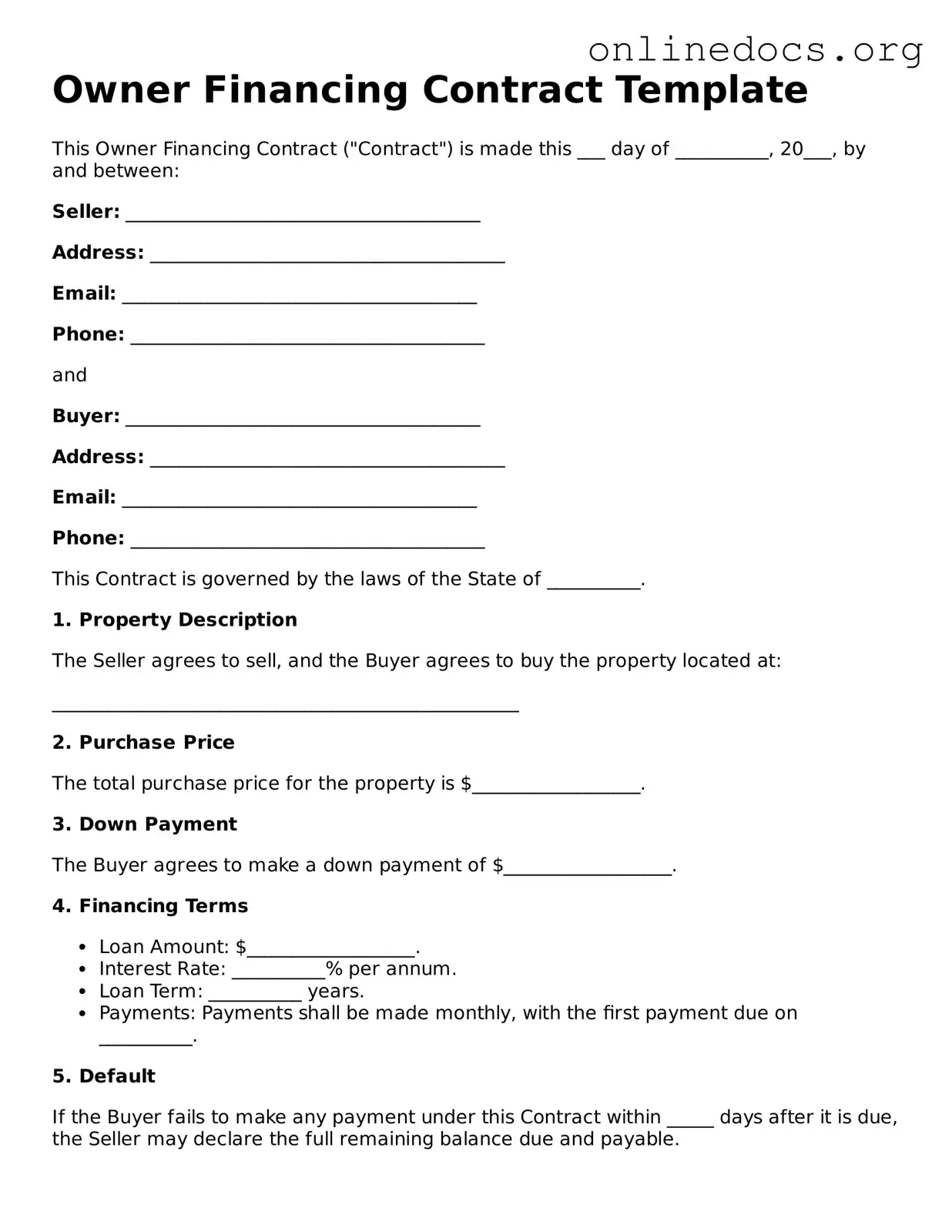The Owner Financing Contract form shares similarities with a Lease Purchase Agreement. Both documents allow a buyer to occupy the property while making payments, but they differ in ownership transfer. In a Lease Purchase Agreement, the buyer leases the property with an option to buy it later, while an Owner Financing Contract typically involves direct financing from the seller to the buyer, facilitating immediate ownership transfer upon agreement. This arrangement can benefit both parties by providing flexibility in payment terms and ownership timing.
For those engaged in real estate transactions, understanding the intricacies of the key components of a Real Estate Purchase Agreement form is crucial. This document not only outlines the specifics of the sale but also safeguards the interests of both parties involved.
Another document that resembles the Owner Financing Contract is the Promissory Note. A Promissory Note is a written promise to pay a specified amount of money to a lender or seller. In the context of owner financing, this note often accompanies the Owner Financing Contract. It outlines the borrower's obligation to repay the loan under agreed-upon terms. Both documents establish a financial relationship between the buyer and seller, detailing payment schedules, interest rates, and consequences for default.
The Mortgage Agreement is also comparable to the Owner Financing Contract. A Mortgage Agreement secures a loan with the property itself as collateral. In owner financing, the seller may hold a mortgage on the property until the buyer fulfills their payment obligations. This creates a similar risk for the seller, as they retain a legal claim to the property until the buyer has paid in full. Both agreements protect the interests of the lender while ensuring that the buyer has a clear understanding of their responsibilities.
Lastly, the Real Estate Purchase Agreement is another document that aligns with the Owner Financing Contract. This agreement outlines the terms of the sale, including the purchase price, contingencies, and closing date. While the Owner Financing Contract focuses on the financing aspect, the Real Estate Purchase Agreement encompasses the entire transaction. Both documents work together to facilitate the sale, ensuring that all parties are aware of their rights and obligations throughout the process.
